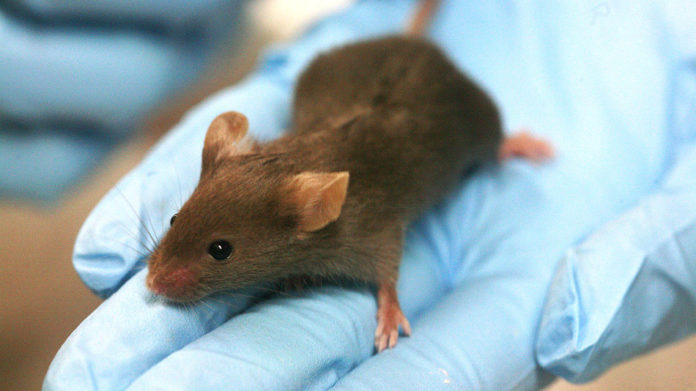Human cells make mouse brains 4 times smarter, scientists say

Pop culture is full of anthropomorphized mice that can drive boats, fall in love and hatch diabolical plans. None of them are real, but a mouse that thinks more like a person seems like a tantalizing possibility now that scientists have boosted rodents’ brain power by infusing their noggins with human brain cells.
According to a recent report in New Scientist, a team of researchers at the University of Rochester Medical Center in New York transplanted human brain cells into the brains of newborn mice. As the team reported in a paper published in the Journal of Neuroscience, the human cells not only survived in the mice brains, they thrived.
Over time, mouse brain cells called glial progenitor cells (GPCs) receded and were replaced by the advancing human glial progenitor cells. A year later, “the forebrain GPC populations of implanted mice were largely, and often entirely, of human origin,” researchers noted in their paper.
Not only did the mice brains accept the foreign neural matter, they used it to their advantage. In one test, according to New Scientist, the “human-brained” mice developed memories that appeared four times better than their average mouse-brain counterparts.
“These were whopping effects,” Dr. Steven A. Goldman, the lead researcher on the project, told New Scientist. “We can say they were statistically and significantly smarter than control mice.”
Such breakthroughs could, researchers hope, lead to the development of treatments for a wide variety of human neurological disorders.
It’s worth noting that the mice they use are not like all other mice. These mice, called Shiverers, are kind of mutants, born with a myelin deficiency. Myelin is a fatty coating that protects and insulates nerves. It’s also not the first time researchers have used human brain cells on Shiverer mice. In 2008, University of Rochester researchers implanted fetal human glial progenitor cells in neonatal Shiverer mice to try to save them from the myelin deficiency. In that study, the mice survived longer and, as in this new study, the human glial matter spread throughout the mice brains.
The new study indicates that the human cells “outcompeted and ultimately replaced” the regular mouse cells so that they were soon “generating mice with a humanized glial progenitor population.” This sounds terrifying, but Goldman assured New Scientist that the scientists have not created half-mouse, half-human creatures.
‘”This does not provide the animals with additional capabilities that could in any way be ascribed or perceived as specifically human,” Goldman said, noting that the mouse brains’ neurons were still mouse neurons, even if the glial cells were human. “It’s still a mouse.”
Have something to add to this story? Share it in the comments.
